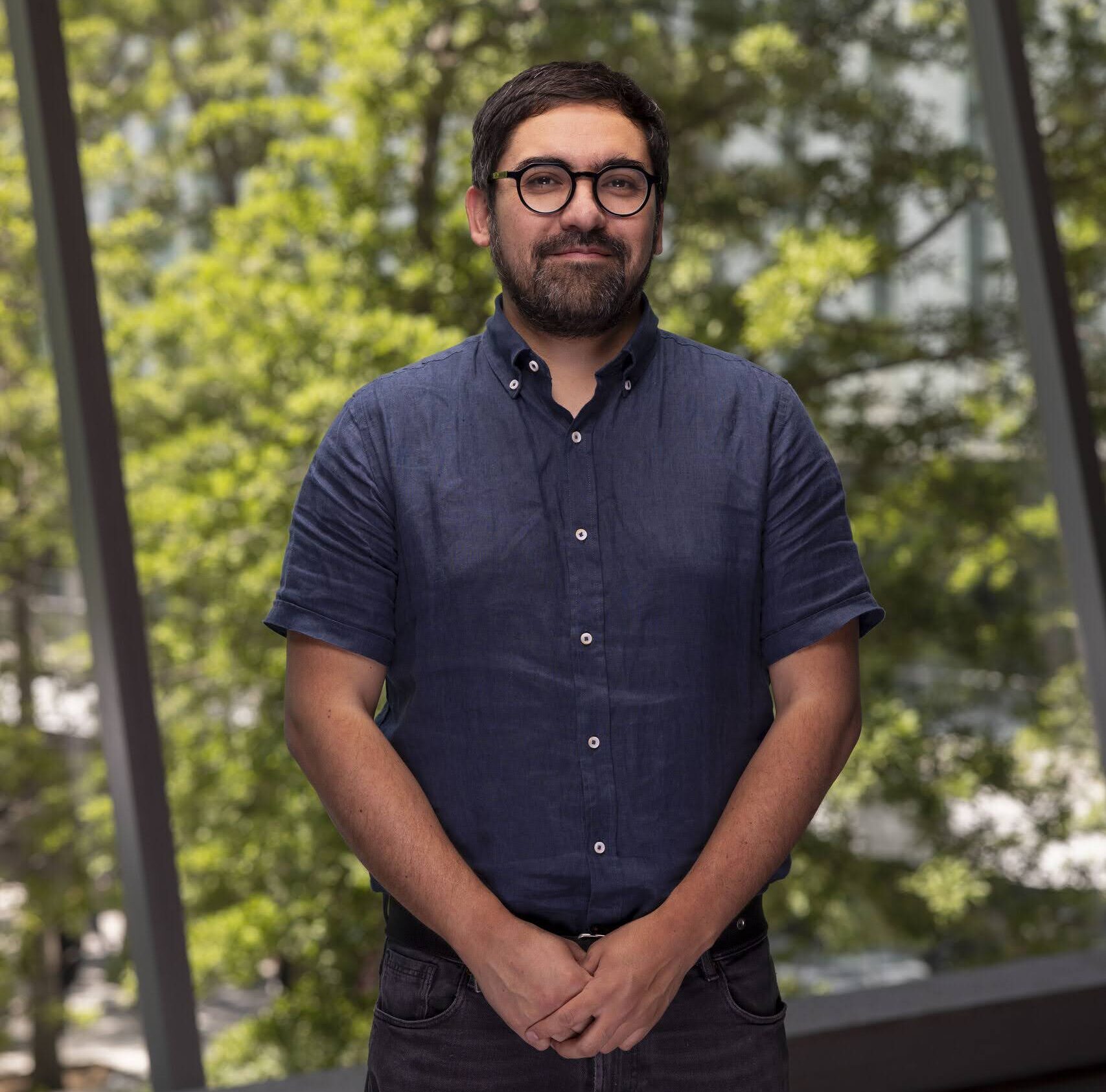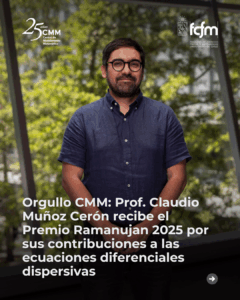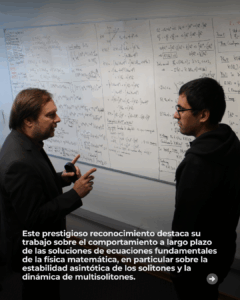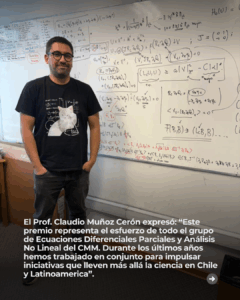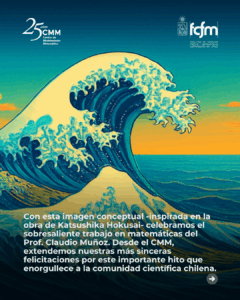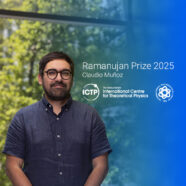
Claudio Muñoz Cerón, Principal Investigator at the Center for Mathematical Modeling (CMM) and Professor at the University of Chile, has been awarded the 2025 Ramanujan Prize, granted by the International Centre for Theoretical Physics (ICTP) and the International Mathematical Union (IMU), in recognition of his fundamental contributions to the study of dispersive partial differential equations.
The award—one of the most prestigious in the world for mathematicians under the age of 45 from developing countries—recognizes Prof. Muñoz’s outstanding work on the long-time behavior of solutions to fundamental equations in mathematical physics, particularly his studies on the asymptotic stability of solitons and the dynamics of multi-solitons, structures that emerge in physical phenomena such as fluid waves, optics, and quantum mechanics.
Prof. Muñoz completed his secondary education at Liceo José Victorino Lastarria, where his fascination with mathematics began under the guidance of his teacher Arquímedes Oyarzún, to whom he expresses deep gratitude. “Thanks to his constant effort in showing us the fascinating aspects of mathematics, I developed a real taste and fascination for the unknown within mathematics itself,” recalls Muñoz.
His passion for astronomy has also accompanied his scientific curiosity since youth: “Although I did not become an astronomer, I always try to stay close to this fascinating field from a mathematical perspective,” he said.
Currently, Prof. Muñoz is a faculty member at the University of Chile, Principal Investigator at the CMM, and a chargé de recherche at the French National Centre for Scientific Research (CNRS). His research focuses on nonlinear dispersive equations, a special class of differential equations that describe the propagation and interaction of waves in various media.
Prof. Muñoz completed his undergraduate studies at the University of Chile and obtained his Ph.D. in Mathematics from Université de Versailles Saint-Quentin, under the supervision of renowned researchers Yvan Martel and Frank Merle. He later held a postdoctoral position at the University of Chicago, working with Prof. Carlos Kenig, before joining the Department of Mathematical Engineering at the University of Chile and the CMM as a researcher.
Interview with Prof. Claudio Muñoz Cerón
What personal and professional significance does receiving the 2025 Ramanujan Prize have for you?
It is an immense joy for me—one that I accept with great pride—as recognition of many years of work, both at the Center for Mathematical Modeling (CMM) and at the Department of Mathematical Engineering (DIM) of the University of Chile. It is also a recognition shared with my colleagues Miguel A. Alejo, Yvan Martel, Michal Kowalczyk, and Felipe Poblete, with whom I have developed key results and who have been a great source of personal and professional support. I am also deeply grateful to my doctoral and master’s students, who have allowed me to explore new ideas and concepts.
Ultimately, this award also recognizes the collective effort of the Partial Differential Equations and Nonlinear Analysis Group at CMM, with whom we have worked together in recent years to advance science in Chile and Latin America. It is a young but highly active group, always eager to push new ideas forward.
How would you describe the contribution of your work on dispersive equations to the development of physics and mathematics?
I have always been interested in the mathematical modeling of physical phenomena, as physics has long been a real, scientific, and social source of inspiration—vast and inexhaustible. Among the areas of physics that interest me most, those related to wave motion have always fascinated me. Waves are everywhere: in quantum mechanics, in the ocean, in the climate, in black holes, and beyond.
Image inspired by “The Great Wave off Kanagawa” by Katsushika Hokusai
Waves interact with one another, becoming a complex, rich, and profound phenomenon, where predicting their long-term behavior is the central challenge of my research. It is precisely in this field that I have developed my most relevant results—together with colleagues and friends—showing that these waves are deeply stable and capable of surviving multiple changes in their environment.
Looking back, what moments or decisions do you consider key in your scientific career?
There are several decisions that have been crucial in shaping my scientific career. First, working with Prof. Manuel del Pino, my master’s advisor at CMM–DIM, was essential for understanding in depth the partial differential equations that model stars and superconductors.
Later, while in France pursuing my Ph.D., learning about equations that model fluids and waves under the supervision of Yvan Martel and Frank Merle was a decisive step that has defined my research for the past 15 years.
How has your connection with CMM influenced your development as a researcher?
At CMM, the collaborative and research-driven environment has allowed me to explore new directions in applied research—projects I continue to advance with colleagues in Chile—such as the description of artificial intelligence through dispersive equations and the intersection of number theory and dispersive analysis.
These new research avenues, beyond the traditional boundaries of partial differential equations, are what fascinate me most today—and both CMM and ANID have provided the support to fully develop them.
Written by Cintia Beltrán, CMM Communications
Posted on Oct 10, 2025 in News




 Noticias en español
Noticias en español
